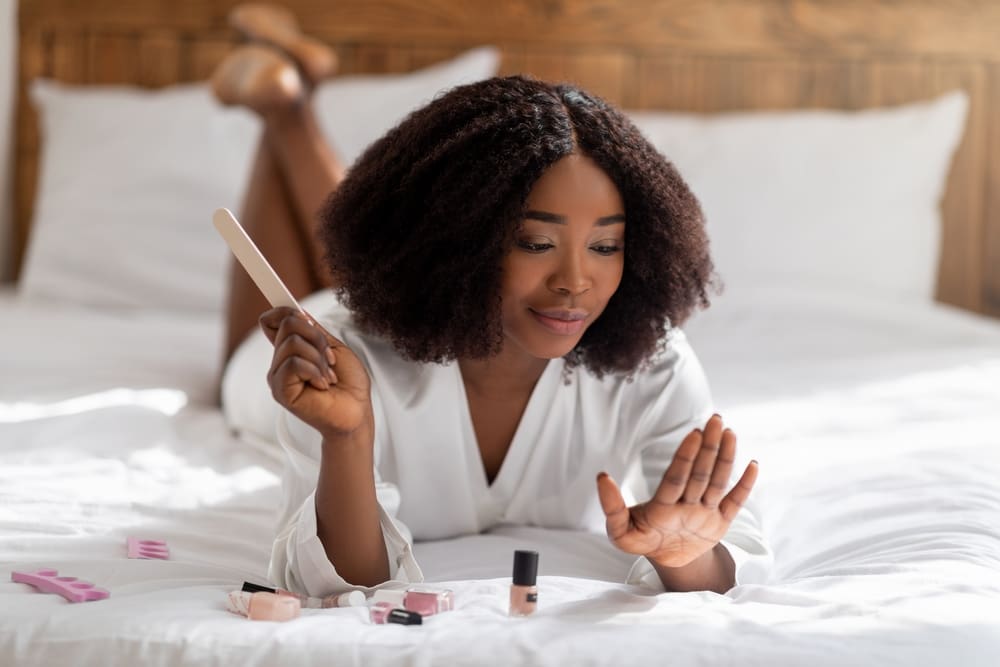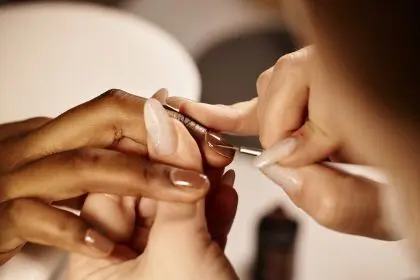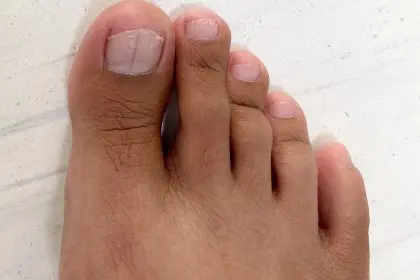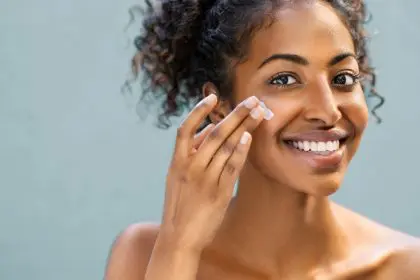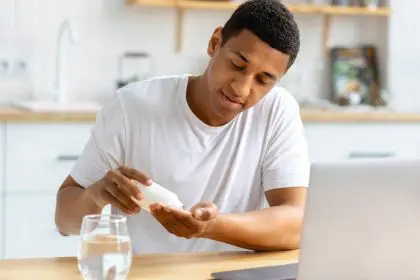Achieving impressive nail growth can be challenging for many individuals who dream of sporting long, healthy nails. A recent trend circulating on social media platforms suggests an unconventional approach: applying minoxidil, the active ingredient in hair loss treatments, to stimulate nail growth. This unexpected use of a hair growth product has captured attention online, with users claiming significant improvements in nail length and strength.
While the concept seems promising, understanding the science, potential benefits, and risks of this approach is crucial before incorporating it into your nail care routine. Research offers some support for this application, though important considerations remain regarding safety and proper usage.
The science behind minoxidil
Minoxidil was originally developed as an oral medication to treat high blood pressure. Medical professionals observed an interesting side effect in patients taking this medication – unexpected hair growth. This discovery led to the development of topical formulations specifically designed to address hair thinning and loss.
The mechanism behind minoxidil’s effectiveness involves blood vessel dilation. When applied topically, it increases blood flow to the target area, delivering more nutrients and oxygen. This enhanced circulation stimulates growth in hair follicles by extending their active growth phase. Dermatologists regularly prescribe and recommend topical minoxidil solutions for various types of hair loss, with 2% and 5% concentrations being the most common formulations.
How minoxidil affects nail growth
The principle behind using minoxidil for nail enhancement follows similar logic to its application for hair growth. Nails grow from matrix cells at the base of the nail plate. Increasing blood flow to the nail matrix theoretically provides more nutrients to these rapidly dividing cells, potentially accelerating growth rate and improving nail strength.
When applied to the nail fold and cuticle area, minoxidil may enhance circulation to the nail bed, supporting faster growth of the nail plate. This improved blood supply could also potentially deliver more nutrients essential for healthy nail development, including proteins, minerals, and vitamins that contribute to nail strength and integrity.
Research supporting minoxidil for nails
While scientific investigation into minoxidil’s effects on nail growth remains limited compared to its well-studied hair applications, some research indicates promising results. A 2017 pilot study published in the International Journal of Dermatology found that participants applying 5% topical minoxidil to their nail folds over eight weeks experienced significant nail growth compared to baseline measurements.
Another comparative study published in Experimental Dermatology examined the effects of both 5% topical minoxidil and oral biotin on nail growth rates. Results showed the minoxidil group experienced approximately 19% faster nail growth, while the biotin group saw only about 13% improvement. These findings suggest minoxidil may indeed offer advantages for individuals seeking enhanced nail growth.
Potential side effects and risks
Despite its potential benefits, applying minoxidil to nails comes with several important considerations. The solution can cause irritation, burning, or stinging sensations when applied topically. The nail fold area contains sensitive skin that may react negatively to the medication, potentially resulting in discomfort or inflammation.
Perhaps the most significant concern involves accidental spread of the medication to surrounding areas. If minoxidil contacts facial skin or other body parts, it could stimulate unwanted hair growth in those regions. Additionally, the medication can cause systemic effects if absorbed in sufficient quantities, including potential impacts on blood pressure, though this risk remains minimal with careful application to small nail areas.
Proper application techniques
For those determined to experiment with this approach, dermatology experts recommend precise application methods to minimize risks. Using a small cotton swab to apply minoxidil directly to the cuticle area represents the safest technique. This targeted approach helps prevent the solution from spreading to surrounding skin while delivering the medication to the nail matrix where growth originates.
After each application, users should discard the applicator to prevent contamination of the minoxidil bottle. Thorough hand washing following application helps remove any residual medication that might otherwise transfer to the face or other body areas. Consistent application appears necessary for results, though optimal frequency remains unclear from current research.
Alternative approaches to nail growth
Before turning to minoxidil, individuals seeking improved nail growth should consider established methods with stronger safety profiles. Proper nutrition plays a crucial role in nail health, with adequate protein, biotin, iron, and zinc being particularly important. Hydration and moisturization of the nail fold and cuticle area also contribute significantly to nail health.
Mechanical factors greatly impact nail integrity, making protective measures important. Avoiding harsh chemicals, wearing gloves for cleaning tasks, and using gentle nail care products can prevent damage that impedes growth. Regular, gentle filing in one direction helps prevent splitting and breakage while maintaining nail strength during the growth process.
When to consult healthcare professionals
Persistent nail growth problems often signal underlying health issues that deserve medical attention. Various nutritional deficiencies, circulatory problems, and skin conditions can manifest through poor nail growth or appearance. Consulting with dermatology specialists allows for proper diagnosis and targeted treatment of these root causes rather than simply attempting to accelerate growth.
Healthcare providers can offer prescription treatments specifically formulated for nail disorders when appropriate. They can also provide guidance on the safety of experimental approaches like minoxidil based on individual health circumstances and medication interactions. Professional assessment ensures that nail concerns receive appropriate attention within the context of overall health.

